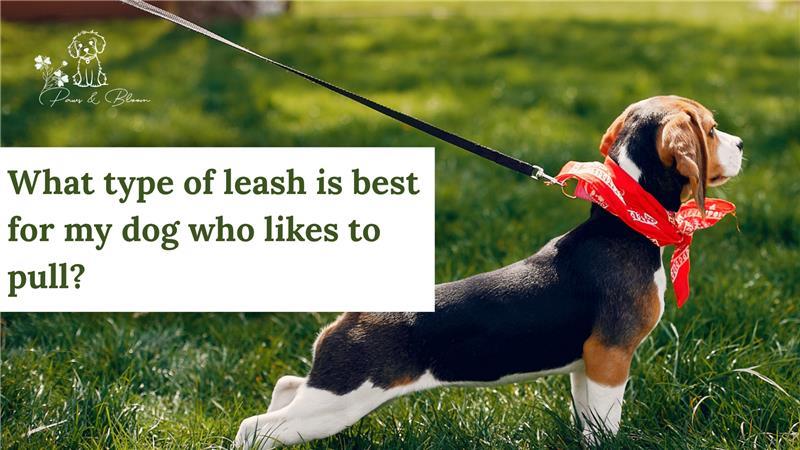Walking your dog should be a relaxing and happy time, but if your dog likes to pull, it can quickly become a struggle. Many dog owners wonder, “What type of leash is best for my dog who likes to pull?” The answer depends on your dog’s size, strength, and walking style, but with the right information, you can find the perfect leash for your needs.
If you’re starting your search, it’s smart to check out a collection of the best dog leashes for strong pullers. This way, you can compare different types, from leather dog leashes to cute dog leashes, and find the one that works best for your pup.
Why Do Dogs Pull on the Leash?
It’s a question almost every dog owner asks at some point. Dogs pull for lots of reasons. Sometimes, they’re just excited to see the world, every walk is a new adventure full of smells, sights, and sounds. Other times, pulling happens because your dog hasn’t learned how to walk calmly beside you. Puppies and young dogs are especially likely to pull, simply because they’re full of energy and curiosity.
Some breeds are naturally strong or determined, making pulling more common. And if your dog has learned that pulling gets them where they want to go faster, they’ll keep doing it. The good news? With the right leash and some training, you can teach your dog better walking habits and make walks enjoyable again.
What Features Make a Leash Good for Pullers?
When you’re looking for the best dog leash for dogs that pull, there are a few key features to keep in mind:
Durability and Strength
A leash for a pulling dog needs to be tough. Materials like vegan leather, thick nylon, or rope are all excellent choices. If your dog is strong or a heavy puller, a vegan leather dog leash for sensitive skin is both gentle and sturdy, making it ideal for daily walks.
Comfortable Handle
If your dog pulls, your hands can take a beating. A rope dog leash with a padded handle is gentle on your hands and offers a secure grip, even during sudden lunges.
Proper Length
A leash that’s four to six feet long is usually best for dogs that pull. This length gives you control while still letting your dog explore. For recall training or open spaces, a long dog leash for recall training is perfect, while a shorter leash is better for crowded areas.
Shock Absorption
A shock-absorbing dog leash for energetic dogs can help soften the impact when your dog suddenly pulls, making walks smoother and more comfortable for both of you.
Extra Handles and Adjustability
Double handle leashes or adjustable dog leash for training puppies give you more control, especially in busy places or when you need to keep your dog close.
Reflective and Waterproof Features
If you walk at night or in wet weather, a reflective dog leash for night walks or a waterproof dog leash for outdoor adventures adds safety and durability.
Chew-Proof Construction
If your dog loves to chew, a chew-proof dog leash for aggressive chewers is a must. These leashes are built to withstand even the most determined chewers.
Hands-Free Options
A hands-free dog leash for running is perfect for active owners who want to jog or hike with their dog without holding a leash.
Cute and Stylish Designs
Who says practical can’t be cute? There are plenty of cute dog leashes and stylish dog leashes for fashion-conscious owners that let you show off your dog’s personality while keeping them safe.
Which Leash Styles Work Best for Dogs That Pull?
Let’s look at some of the most effective leash styles for dogs who tend to pull:
Leather Dog Leashes
Leather dog leashes are known for their strength, durability, and classic look. They’re a great choice for strong pullers and are comfortable to hold, especially after they’ve softened with use. If you want a leash that lasts for years and looks good, leather is a top pick.
Rope Leashes
A rope dog leash for strong dogs is tough and comfortable, making it ideal for large breeds and heavy pullers. Many rope leashes come with padded handles for extra comfort.
Shock Absorbing Leashes
If your dog is full of energy, a shock-absorbing dog leash for pulling can help reduce the strain on your arm and shoulder, especially during sudden lunges.
No-Pull Harness and Leash Sets
Pairing a no-pull dog leash and harness set is often the best no pull dog leash and harness solution for strong pullers. The harness distributes pressure across your dog’s chest, making it harder for them to pull and easier for you to guide them.
Adjustable Dog Training Leashes
Dog training leashes that adjust in length are great for teaching loose-leash walking and recall. They’re also handy for switching between close control and more freedom.
Long Dog Leashes
A long dog leash for recall training is perfect for practicing commands in open spaces. It gives your dog room to roam while still keeping them safe.
Reflective and Waterproof Leashes
A reflective dog leash for walking at night or a waterproof dog leash for outdoor use is perfect for walks in low light or rainy conditions.
Chew-Proof Leashes
If your dog is a chewer, a chew-proof dog leash for aggressive chewers is a must. These leashes are made from tough materials that can withstand even the most determined chewers.
Hands-Free Leashes
A hands-free dog leash for running is ideal for active owners who want to jog or hike with their dog without holding a leash.
Cute and Stylish Dog Leashes
If you like to make a statement, cute dog leashes and stylish dog leashes for fashion-conscious owners let you express your dog’s personality while keeping them safe.
Leash Types to Avoid for Pullers
Some leashes aren’t ideal for strong pullers:
• Thin or Flimsy Leashes: These can snap under pressure, especially with big dogs or heavy pullers.
• Chain Leashes: Heavy and uncomfortable, they can even encourage more pulling.
• Retractable Leashes: A retractable dog leash with a locking mechanism might seem convenient, but it can make pulling worse and is harder to control in busy areas.
Real-Life Story: From Chaos to Calm
Imagine heading out for a walk with your strong, excited dog. Every squirrel and new scent sends your dog pulling ahead, making the walk feel more like a workout than a relaxing outing. Switching to a durable dog leash for heavy pullers with a padded handle can change everything. Suddenly, you have more control, your hands don’t hurt, and your dog starts to learn that walking calmly gets them more freedom. Walks become something you both look forward to again.
Should You Use a Harness or Collar for Dogs That Pull?
Many pet owners wonder if a harness is better than a collar for strong pullers. For most dogs, a no-pull harness is safer and more comfortable. Collars can put pressure on your dog’s neck and even cause injury if your dog pulls hard. A harness spreads the force across your dog’s chest and shoulders, making it easier to guide them and reducing the risk of harm.
Pairing a no-pull harness with the best dog leash for pulling dogs gives you the best chance at enjoyable, safe walks.
What Leash Length Is Best for a Dog That Pulls?
A four to six foot leash is usually ideal for control and safety. This length gives you enough control to keep your dog close, especially in busy areas, but also allows some freedom for sniffing and exploring. For training or recall, a long dog leash for recall training is useful in open spaces.
Are Rope Leashes Good for Strong Dogs?
Absolutely. A rope dog leash for strong dogs is a top choice for durability and comfort, especially for large breeds that tend to pull. Rope leashes are tough, easy to grip, and often come with padded handles for extra comfort.
What Is a Shock-Absorbing Dog Leash?
A shock-absorbing dog leash for pulling features a stretchy section that helps reduce the force of sudden tugs, making walks more comfortable for both you and your dog. This feature is especially helpful for energetic dogs or those who tend to lunge at distractions.
How Do You Train a Dog to Walk Nicely on a Leash?
Training a dog to walk nicely on a leash takes time and patience. Here are some tips to help you get started:
• Start in a quiet place with few distractions.
• When your dog pulls, stop walking and wait until the leash is slack.
• Reward your dog with treats and praise when they walk calmly by your side.
• Be consistent, use the same commands and rewards every time.
• Practice regularly, and be patient. Every dog learns at their own pace.
Using a comfortable dog leash for daily walks and a no-pull harness can make training easier and more effective.
Tips for Walking a Dog That Pulls
• Use a strong dog leash for big dogs or heavy pullers.
• Pair with a no-pull harness for extra control.
• Practice in different environments to help your dog learn to focus.
• Stay calm and patient- progress takes time.
• Choose a leash with features that match your lifestyle, like a lightweight dog leash for small dogs or a tangle-free dog leash for multiple dogs.
Frequently Asked Questions
What is the best dog leash for dogs that pull?
Look for a leash that is strong, comfortable, and the right length. Options like a vegan leather dog leash for sensitive skin or a rope dog leash with a padded handle are excellent for daily use.
How do I stop my dog from pulling on the leash?
Use a no-pull dog leash and harness set, and practice stopping and waiting when your dog pulls. Reward calm walking and be consistent with your training.
Are harnesses better than collars for dogs that pull?
Yes, harnesses distribute pressure across the chest, making walks safer and more comfortable, especially when paired with the best no-pull dog leash and harness.
Is a retractable leash good for dogs that pull?
Retractable leashes are not recommended for strong pullers because they reduce your control and can make pulling worse.
What’s the best leash for walking at night or in the rain?
A reflective dog leash for walking at night or a waterproof dog leash for outdoor use will keep your dog safe and your leash in good shape.
Are there cute dog leashes that are also strong?
Yes! Many brands offer cute dog leashes that are also durable and comfortable, so you don’t have to sacrifice style for strength.
What are the benefits of leather dog leashes?
Leather dog leashes are strong, durable, and soften with use, making them comfortable for long walks and perfect for strong pullers.
What’s the difference between dog training leashes and regular leashes?
Dog training leashes are often adjustable and longer, giving you more control during training sessions and helping with recall and loose-leash walking.
More Advice on Choosing Pet Products
If you want to learn more about choosing the right pet care products online, there are helpful guides that can make your shopping experience easier and more informed.
Final Thoughts
Choosing the right leash for a dog that pulls isn’t just about comfort, it’s about safety, training, and making every walk enjoyable. Whether you need strong dog leashes for large breeds, shock-absorbing dog leashes for energetic dogs, leather dog leashes for classic durability, or cute dog leashes for a touch of style, the most important thing is that it fits your needs and help you and your dog enjoy your time together.
A good leash can transform your walks from stressful to enjoyable. It gives you the confidence to explore new places, train your dog, and build a stronger bond. Remember, every dog is different, so take the time to find the leash that works best for you both.
Happy walking!


